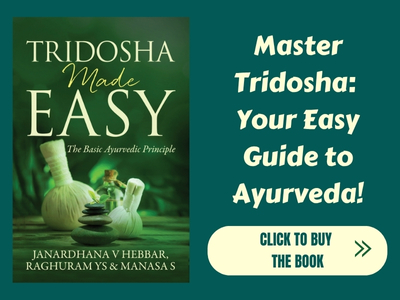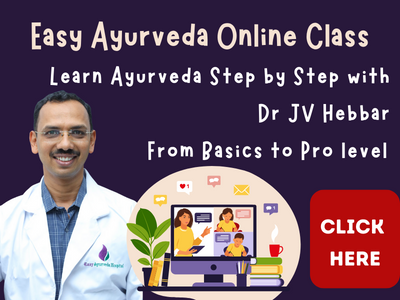Sushruta Samhita Sutrasthana Chapter 10: Vishikhanupraveshaniya Adhyaya (Entering into the Profession)
The 10th chapter of Sutrasthana of Sushruta Samhita is named as Vishikhanupraveshaniya Adhyaya. This chapter deals with the information on Entering into the Profession.
अथातो विशिखानुप्रवेशनीयमध्यायं व्याख्यास्यामः ||१||
यथोवाच भगवान् धन्वन्तरिः ||२||
We will now expound the chapter by name Visikhanupravesaniya – entering into the profession; as revealed by the venerable Dhanvantari.
Table of Contents
Vrtti Pravesa Adhikara: Eligibility to enter the profession
अधिगततन्त्रेणोपासिततन्त्रार्थेन दृष्टकर्मणा कृतयोग्येन शास्त्रं निगदता [१] राजानुज्ञातेन नीचनखरोम्णा शुचिना शुक्लवस्त्रपरिहितेन छत्रवता दण्डहस्तेन सोपानत्केनानुद्धतवेशेन सुमनसा कल्याणाभिव्याहारेणाकुहकेन बन्धुभूतेन भूतानां सुसहायवता वैद्येन विशिखाऽनुप्रवेष्टव्या ||३||
ततो दूतनिमित्तेत्यादि| गमनाय प्रश्नाय वा आगतः पुरुषो दूतः, निमित्तमनुकूलं सुरभिवातादि, शकुनं पक्षिविशेषप्रशस्तवाक्यादि, मङ्गलं स्वस्तिकपूर्णकुम्भादि, एषामनुलोम्येन प्रशस्ततयेत्यर्थः| त्रिभिरेतैरित्यादि त्रिभिरेतैर्विज्ञानोपायैरनन्तरोक्तैर्दर्शनस्पर्शनप्रश्नैः| हिशब्दो यस्मादर्थे| श्रोत्रादिभिरिति आदिशब्दात्त्वङ्नेत्ररसनघ्राणानि गृह्यन्ते||४||
Below mentioned are the criteria of eligibility for a physician to enter into the profession of medicine (practice) –
– He should have completed the textual study and learning in its entirety. The learning should be in accordance with what and how it has been taught by an experienced teacher under whom he has studied.
– He should have properly understood the meaning and interpretations of whatever he has studied.
– He should have keenly observed the actions – treatments conducted in this context – including planning and administration of therapies, surgical methods etc as done and demonstrated by his teacher. He should also have observed and noted the changes and effects of those treatments and should know the importance of the follow-ups.
– He should undergo comprehensive practical training and should make himself fit to practice the treatments and procedures once he comes out of the institution completing his studies.
– He should always be capable of recapitulating whatever he has learnt from his science.
– He should have obtained permission and certification of completion of studies from the King or government (in olden days) and now from the concerned medical authorities. This is very much needed to practice the science and surgical methods.
– He should have trimmed the hairs of the head, beard and moustaches and also nails by regularly removing the unkempt hairs and nails. This would project his physical presentation in a positive way.
– He should take bath regularly and wear clean white clothes. He should be dressed in the simplest and most elegant way that he could. The attire and attitude should not be awkward and annoying.
– He should hold an umbrella and staff and wear good footwear.
– He should always keep in mind calm and pleasant and in a state of utmost balance.
– He should be habituated to utter well-wishing words for everyone. In this way, he would be wishing good for all living beings and will receive the same from others.
– He should have an attitude of becoming a good, compassionate friend or companion to everyone.
– He should be the one who is always accompanied by good assistants.
Rogi Pariksha: Examination of the patient
ततो दूतनिमित्तश्कुनमङ्गलानुलोम्येनातुरगृहमभिगम्य,उपविश्य,आतुरमभिपश्येत् स्पृशेत् पृच्छेच्च,त्रिभिरेतैर्विज्ञानोपायै रोगाः प्रायशो वेदैतव्या इत्येके;तत्तु न सम्यक्,षडिविधो हि रोगाणां विज्ञानोपायः,टद्यथा-पञ्चभिः श्रोतादिभिः प्रश्नेन चेति॥४॥
In olden days, the physician used to visit the home of the patients, diagnose and treat them there itself.
Below mentioned are the conditions in which the physician should go to the patient’s home and enter it –
– Duta – after having noted the auspiciousness of the duta – the messenger who comes from patient’s home to invite the physician or to take him to the patient’s home
– Nimitta – after observing for the presence of omens or any ominous signs
– Shakuma – after observing keenly and subtly all the happenings and events which happen on the way to the patient’s house and
– Mangala – after having observed for any activities which signify good or goodness on the way to the patient’s house
After having observed all the four factors mentioned above, the physician should enter the patient’s house. After entering the house, the physician should get seated near the patient. Later he should examine the patient through methods of observation (inspection), touch (palpation, percussion) and enquiry (interrogation).
As per the opinion of some other authorities and experts, all diseases can be diagnosed by applying all these three methods i.e. inspection, palpation and interrogation.
There are six methods of understanding (diagnosing) the diseases, such as – examination by the five sense organs (ear etc) and by interrogation (questioning).
Details about Pancendriya Pariksha: Examination, understanding and diagnosing diseases with the help of sense organs
तत्र श्रोत्रेन्द्रियविज्ञेया विशेषा रोगेषु व्रणास्त्रवविज्ञानीयादिषु वक्ष्येन्ते- “तत्र सफेनं रक्तमिरयत्रनिलः सशब्दो निर्गच्छति’(सू. अ. २६)इत्येवमादयः । स्पर्शनेन्द्रियविज्ञेया ः शीतोष्णश्लक्ष्णकर्कशमृदुकठिनत्वादयः(स्पर्शविशेषा)ज्वरशोफादिषु । चक्षुरिन्द्रियविज्ञेयाः शरीरोपचयापचयायुर्लक्षणबलवर्णविकारादयः । रसनेन्दियविज्ञेयाः प्रमेहादिषु रसविशेषाः। घ्राणेन्दियविज्ञेया अरिष्टलिङ्गादिषु व्रणानामव्रणानां च गन्धविशेषाः । प्रश्नेन च विजानीयाह्देशं कालं जातिं सात्म्यमातङ्कसमुत्पित्तिं वेदनासमुच्छ्रायं बलमन्तरग्रिं वातमूत्रपुरीषाणां प्रवृत्तिमप्रवृत्तिं कालप्रकर्षादींश्च ञिशेषान् । आत्मसदृशेषु विज्ञानाभ्युपायेषु तत्स्थानीयैर्जानीयात् ॥५॥
Information obtained by Sravanendriya (organ of hearing) – We can obtain different kinds of information of diseases through the organs of hearing i.e. ears, like frothy blood coming out of the ears associated with sound, forced by vata etc. This will be described later in Vrana Srava Vinana chapter (chapter 26).
Information obtained by Sparsanendriya (organ of touch – skin) – The organ of touch i.e. skin can give us important information about the below mentioned aspects in fever, oedema and other diseases –
– Coldness
– Heat
– Smoothness
– Roughness
– Softness
– Hardness etc
Information obtained by Caksurindriya (organ of sight – eye) – Below mentioned kinds of information can be available through the organ of sight i.e. eye –
– Increase and decrease in the size of the body
– Signs of longevity / life-span
– Changes in the colour of the body
– Changes in the strength of the body etc
Information obtained by Rasanendriya (organ of taste – tongue) – The organ of taste i.e. tongue can give us information about different kinds of tastes manifested in diabetes and such other diseases.
Information obtained by Ghranendriya (organ of smell – nose) – The organ of smell i.e. nose can provide the physician with information about different kinds of smells appearing in various diseases as in ulcers and also in non-ulcerous diseases.
Information obtained through Prasna i.e. questioning – Questioning or interrogation of the patient can fetch the below mentioned types of information which will be helpful for the physician –
– habitat of the patient and the nature of the habitat
– time, season and changes occurring due to their impact
– caste and accustoms
– strength
– nature of agni – the digestive fire and its varying strength and its capacity to digest the food,
– information about fart, faeces and urine, about their elimination and non-elimination
– time of exacerbation of disease and its symptoms etc.
The interrogation can be extended to obtain information from the locals i.e. relatives, friends and persons near and dear to the patient.
The diseases which have not been examined through the five organs of sense or the diseases whose proper information has not been properly given by the patient or attendants, or those which have not been properly enquired (interrogated) will put the physician in a state of confusion during the treatment (planning and implementation).
Management of diseases according to their prognosis
एवमभिसमीक्ष्य साध्यान् साधयेत्,याप्यान् यापयेत्,असाध्यान्नैवोपक्रमेत,परिसम्वत्सरोत्थितांश्च विकारान् प्रायशो वर्जयेत् ॥६॥
Sadhya Rogas – In this way, only the sadhya rogas i.e. diseases which fall into the category of ‘curable diseases’ should be cured, after conducting proper examination of the patient and the disease and after having collected thorough information about the diseased and the diseases.
The yapya rogas – those that tend to persist (manageable but cannot be cured in entirety) should be controlled by proper and timely administration of the medicines and treatments i.e. take caution that the patients are not troubled by those diseases.
The asadya rogas: Diseases which are incurable should not be treated.
The parisamvatsarothita rogas – long-standing diseases – The diseases which have persisted for more than one year shall not be treated (refused treatment) because they are also generally incurable.
Diseases which would confuse the physician while treating
भवति चात्र:-
मिथ्यादृष्टा विकाराहि दुराख्यातास्तथैव च।
तथा दुष्परिमृष्टाश्च मोहयेयुश्चिकित्सकम् ॥७॥
One verse here
Below mentioned are the conditions in which the disease would put the physician in a state of confusion –
– diseases which have not been properly observed by the physician
– diseases which are not detailed in a proper way by the patient or his kin
– diseases which have not been examined properly and diagnosed correctly by the physician
Persons and conditions in which the curable diseases become incurable
तत्र साध्या अपि व्याधयः प्रायेणैषां दुश्चिकित्सतमा भवन्ति । तद्याथा- श्रोत्रियनृपतिस्त्रीबालवृद्धभीरुराजसेवककितवर्दुर्बलवैद्यविदग्धव्याधिगोपकदरिद्रकृपणक्रोधनानामनात्मवतामनाथानां च;एवं निरुप्य चिकित्सां कुर्वन् धर्मार्थकामयशांसि प्राप्नोति ॥८॥
Below mentioned are the conditions / persons in which even the curable diseases become difficult to cure –
– those who read and recite Vedas daily, orthodox persons (who adheres rigidly to the rites and rituals prescribed in the scriptures),
– the king,
– women,
– children’
– the aged,
– the frightful,
– servants of the king (officials),
– the gambler,
– the debilitated,
– those who pretend as physicians,
– those who conceal their diseases,
– the poor,
– the miser,
– the angry man (those who always get angry),
– those who do not care about self and are undisciplined with respect to their food habits and life activities (those who are not disciplined in their senses and mind) and the destitute
The physician will obtain righteousness, wealth, desire and success in his life if he commences the treatment of diseases after having intimated them the outcomes of the treatment.
भवति चात्र:-
स्त्रीभिः सहास्यं संवासं परिहासं च वर्जयेत् ।
दत्तं च ताभ्यो नादेयमन्नादन्यद्भिषग्वरैः ॥९॥
One verse here
The ideal physician should avoid the below mentioned gestures as related to women –
– sitting with them in close proximity
– living with them,
– having fun and enjoyment with them,
– accepting anything given by them (with the exception of food)
इति श्रीसुश्रुतसंहितायां सूत्रस्थाने विशिखानुप्रवेशनीयो नाम दशमोऽध्यायः ॥१०॥
Thus ends the Tenth chapter by name Visikhanupravesa,in Sutra Sthana of Susruta samhita.









